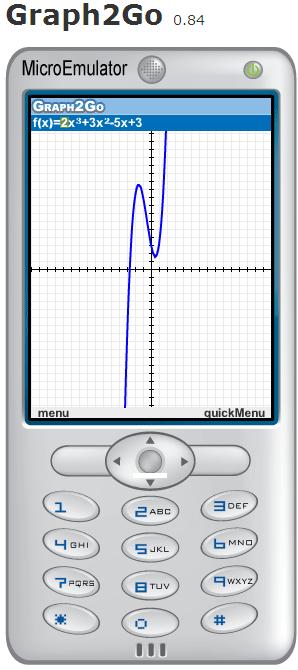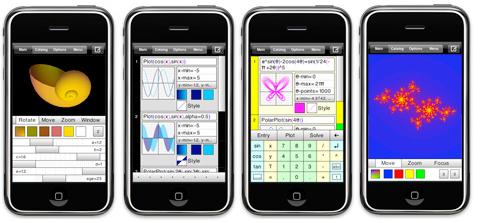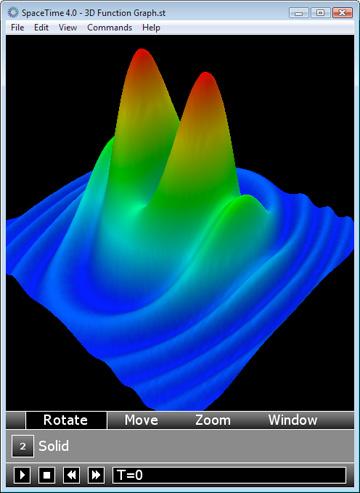Computational media: the universal acid of mathematics teaching (4)
Posted by: Gary Ernest Davis on: December 29, 2009
Teaching mathematics with technology
Recently I taught a graduate level course “Technology for Mathematics Teachers” in which undergraduates, in-service, and pre-service teachers of mathematics participated. An issue that arose early, and which dominated our discussions, was the lack of easy access to technology in classrooms. Some typical comments were:
- “Presently technology is not used in my teaching environment. Obstacles such as time, money, and curriculum deter teachers. I am working in a classroom which has one computer with limited access to the Internet. The main purpose of the computer is grading and email. The email system was designed basically to save on paper. Integrating technology in the classroom can be done with curriculum related projects. If the administration can be convinced technology will increase student test scores they would be more receptive to change. Teacher training is the key. If a teacher is trained and comfortable with the technology they could demonstrate its benefits. Once this benefit is demonstrated the next step would be to study and test the result of technology based curriculum verses the standard classroom. …Â The environment of the classroom can be changed but it would take time, training, and money the schools may not be willing to invest. Technology can be brought into schools if the educator is persistent, knowledgeable, and convincing.”
- “Some of the most difficult perspectives of implementing technology in my classroom, or in my school, are very obvious. First, there are no computers in my classroom other than the teacher computer. This computer is regulated by the IT department in which they do not allow software to be installed without their approval – and that doesn’t happen without much time and red tape. Even trial or free software is prohibited most of the time. There is a laptop cart (two, exactly) that is available on a first come first serve basis and this is usually always taken by the English or history teachers who have regular needs for the computers. And again, there is the issue of software being installed – there isn’t any! If I’d like for my students to use technology, it would have to be with using something available on the internet alone, and that is usually not something that I can find that allows an entire class to work productively on Algebra 1, 2 or Geometry concepts.”
- “If teachers know how to use hardware, that doesn’t necessarily mean the students do. Teachers would need to devote ample time in teaching the students how to use any software even before they use it to teach a lesson. This takes time. Some students may know way more than others and begin to feel bored through any tutorials of how to use a program and start getting off task. It may even be a case of students lacking the interest that keep them unmotivated.”
Yet students do have a powerful technological tool with them: their cell, or mobile, phone. And students do not need to be trained how to use this technology – they are already way ahead of the curve. Additionally, the use of mobile phones in teaching and learning mathematics is being studied and analyzed in a number of countries.
Mobile phones and mathematics
What’s available?
SpaceTime 4.0 is the killer app for iPhones and iPod Touch.
It also runs under Windows 2000/XP/Vista/7., Mac OS 10.4 and above, and Pocket PC (compatible with Windows Mobile 2003, 2003 SE, 5.x, 6.x)
Spacetime 4.0 is not free, but is available at a reasonable price for its outstanding capabilities: $99 for computer version, $79 for Pocket PC, $15 for iPhone or IPod Touch.
 Math4Mobile develops Java  mobile phone apps for teaching and learning mathematics.
Math4Mobile develops Java  mobile phone apps for teaching and learning mathematics.
They have a Website a Twitter page, and a Facebook page.
This project is lead by Michal Yerushalmy of the Institute for Alternatives in Education at the University of Haifa.
x
iPhone apps. There are numerous iPhone apps that engage students in various aspects of  arithmetic, some are free, others range from $0.99 to a few dollars.
Sigma Centre for Excellence in Teaching and Learning (CETL) in the provision of mathematics and statistics support. This centre, run jointly by Loughborough and Coventry universities in the UK, produces videos on selected mathematical topics that are download-able to mobile phones. Currently their video tutorials are restricted to complex number topics.
Who’s doing what?
Nokia in South Africa. South Africa’s Department of Education is collaborating with Nokia and the nonprofit organization Mindset Network in a pilot project to improve the mathematical skills of tenth-grade girls. To do that, they have initiated a program called M4Girls, which uses Nokia cell phones that are loaded with mathematics.
Michal Yerushalmy, Professor of Mathematics Education, at the University of Haifa. She developed the Math4Mobile Java apps and works to implement these in classrooms in Israel.
Kevin Scritchfield, Fresno, CA, uses iPhones and/or IPod Touch in his classroom, according to Twitter reports. Â I have yet to verify this with Kevin, but hope to very soon.
Ann Gregson, Concord, NC, has access to a set of iPod Touch which she uses to teach mathematics.
rachelala tweeted:
When a high school principal I lifted cell phone ban 5 years ago. It brought way more benefits than problems #edchat
Mingoville tweeted:
- lifting cell phone ban enabled students to use camera and calculator functions readily in lessons. and on trips
- Best e.g. was ‘challenging’ boy who re-did a Sci experiment at weekend, videod it and showed us on his phone on Monday
Xinyou Zhao & Toshio Okamoto, University of Electro-Communications, Japan, wrote an article on a Mobile Mathematics Tutoring (MoMT) system, which provides mathematics tutoring, exercises, and discussion for elementary students to improve their mathematical knowledge and skills: Â Personalized_Mobile_Mathematics_Tutoring_System_for_Primary_Education
Mobile Devices in the Classroom. District Administration: the magazine of school district management. “Some districts and administrators are realizing the untapped potential of cell phones. It’s part of an “anytime, anywhere†learning movement that leaves laptops and even smaller netbooks behind, proponents say, in favor of more mobile, affordable and reliable handheld devices—from “smartphones,†which can run operating systems such as Windows Mobile and a host of software, to iPods, known more for playing audio and video but adaptable to more interactive applications through new educational platforms.”  Rest of article …
Geometry of the built environment
Several times when I have been engaging pre-service elementary teachers with geometry I have sent them out around campus with disposable cameras – usually one camera to every 2 students – to photograph geometric aspects of the built environment. Typically, they come back , talk about what they saw, with attempts at drawing, and I develop the film to give back next class and discuss again. My aim is to estimate where they are in the van Hiele level classification of geometric understanding, and to get them, as prospective teachers, to understand the van Hiele levels so they can tailor their own geometry lessons to their prospective student’s capabilities.
It is instructive to me, and to these prospective teachers, to see how some of them describe geometric figures in a very perceptual way as round, pointy, square, circles … and how others see more deeply into properties and relationships between properties.  Discussing their own level of understanding of geometry seems to  help them understand the geometry better and also help them think about how they would teach geometry.
Buying and distributing disposable cameras, collecting them, developing them, and handing out out prints, is a long and  time-consuming task. How much better to get students to take pictures with their cell phones, post the pictures to a blog or Flickr account, and share?
A junior high school teacher colleague is working with me to develop a unit on geometry of the built environment  for her year 10 students, most of whom avowedly hate geometry, remember little to nothing of their grade school geometry, and keep asking her what use this is to their lives.
Opening their eyes to the geometry of the built environment that surrounds them – in school, at home, in the malls and shopping centers – may allow them to see the depth of thought that goes into the built environment in which we live, and to which someone contributed, and made a substantial living, as architect, designer, planner, builder, or client. Â Her students will use their cell phones to take pictures of the built environment throughout the semester.
They will post to a blog, and discuss on the blog the features of their geometric postings. Currently she plans to spend a small amount of time each class having a couple of students discuss aspects of their blog postings.
________________________________________________________________
Thanks to the following tweeps for their input: @msgregson, @MikeCr, @Arithmeroo, @busynessgirl, @mrautomatic, @ottomaddock, @girlmeetsbike, @Algorithmist, @PR4Science
I would like to add to the brief samples of cell phone use in mathematics classrooms. Please share your experiences with me.




December 29, 2009 at 6:09 pm
Next fall I will be taking a class on using the Touch for educational purposes for my Master’s program. I am excited to explore some of the apps that can be used. As I learn more about them, I will definitely look into using them in the classroom.